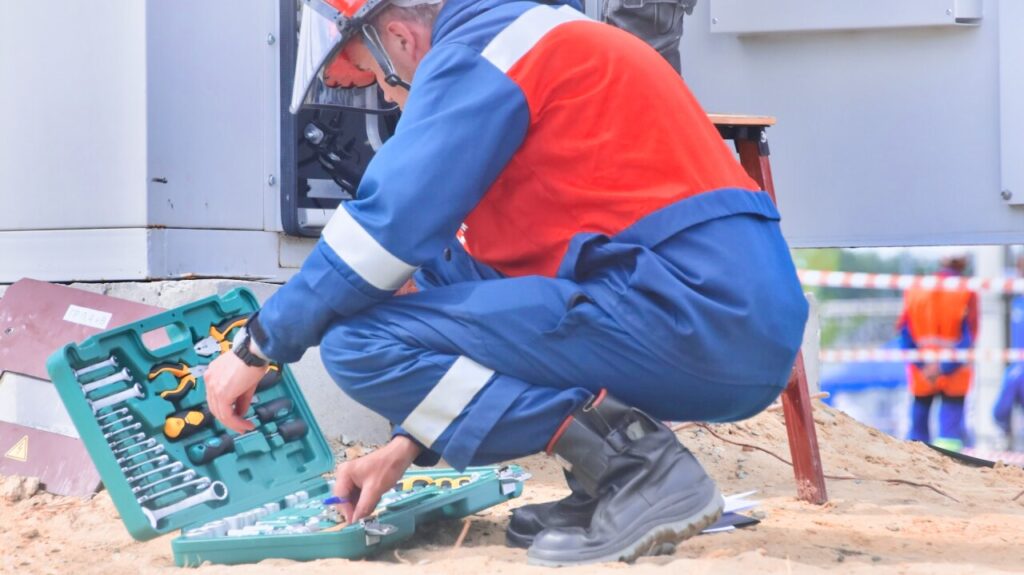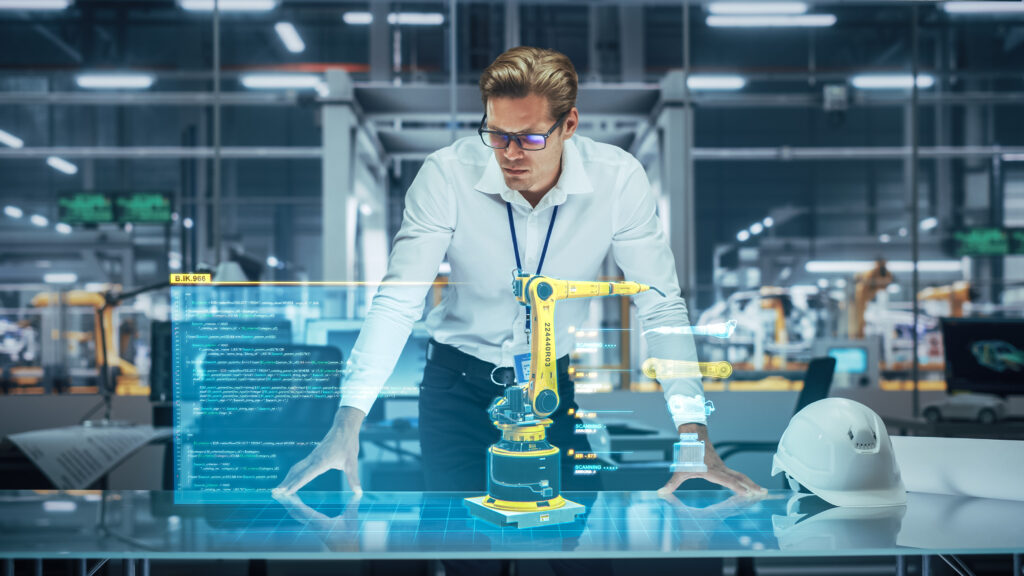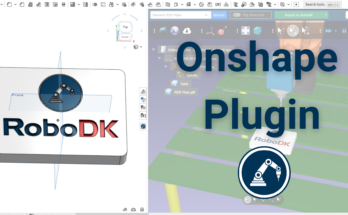If you don’t manage energy and money properly, robots can consume large amounts of electricity. This leads to higher energy bills and eats into the return on investment of the robotic technology.
Fortunately, there are various ways to save energy when using industrial robots. Techniques like optimizing speed and accelerations, improving programming trajectories, and reducing friction can be fairly easy and very effective for reducing energy usage.
Here are 15 useful ways you can save energy (and money) with your industrial robots:
1. Use Advanced Programming Software
One of the biggest wastes of energy with robots is unnecessary movement. So, the first way you can save energy is to use the right robot programming software.
By improving the programming of your robots, you can optimize aspects of the robot’s movements and operation that will affect energy usage in various ways.
2. Optimize Cycle Time
A fundamental metric of robot operation — which strongly affects energy usage — is the cycle time. This is the time it takes to complete one cycle of the robot’s program.
By optimizing the robot’s speed for the task and reducing wait times between tasks, you can improve its efficiency and thus its energy usage.
3. Implement a Maintenance Program
Most robotic systems require regular maintenance to keep them running at their best. If you want to avoid wasting energy, ensure you have a maintenance program for your robots.
During maintenance, regularly check and replace worn parts, clean moving components, and test to ensure that the robot is running smoothly.

4. Enable Sleep Mode
A fairly new trend in robotics is the introduction of dynamic power modes to improve energy efficiency by ensuring the robot is only using energy when it is performing a task.
When the robot dynamically changes between modes like operate, standby, and hibernate, it can use less energy.
5. Use Power Management Systems
Some modern robots also have advanced power management systems that can help to reduce energy consumption significantly.
Just like smart home energy systems, these allow the robot to track its energy usage and adapt its operation to remain as efficient as possible.
6. Improve Robot Programming
By improving the programming of your robot’s movements, you can affect its operation to save energy in various ways.
Examples of changes you can make to improve the robot’s efficiency include minimizing the speed during slow-moving segments of the task and optimizing trajectories, so the robot only moves the minimum required to get where it is going.
A good offline programming tool can help you do this. Some software packages even have AI tools. For example, RoboDK includes a PRM motion planner which automatically plans the optimal trajectory for your movement.
7. Choose the Right Robot
It’s important to choose the right robot for the job at hand. For example, a dedicated palletizing robot can use around 5 times less energy than a multi-purpose industrial robot with similar specifications.
While multi-purpose robots can be useful, sometimes special-purpose or limited-purpose robots are actually more energy efficient.

8. Educate Users
Educating your robot users on efficient operation and maintenance of the robot is another key step to becoming more energy efficient.
Teach people how to properly set up the robot’s parameters for optimal performance and explain how particular movements may affect the robot’s energy usage.
9. Reduce Friction
Reducing friction and resistance in the robot’s joints can also help to reduce energy loss during its movements. This works by reducing the energy needed for each motion, saving energy and cost.
Ways to reduce friction in a robot’s joints involve adding proper lubrication, performing regular maintenance, and being aware of the effects of the robot’s environment on friction.
10. Choose Efficient Motors and Gearboxes
Some gearboxes in robot joints are more energy efficient than others. Where possible, choose robots with higher efficiency motors and gearboxes.
Cheap second-hand robots are readily available and can be a tempting option to reduce the upfront cost of your robotic system. While some of these may be okay, it may be better to invest in an industrial robot that has been designed for maximum efficiency.
11. Use Regenerative Brakes
Regenerative brakes are becoming an increasingly popular technology for various applications, including your home vehicles. They work by converting kinetic energy into electricity, saving energy during braking.
They are also available in industrial robots. For example, Yaskawa recently released a series of robots with regenerative brakes.
12. Get a Lighter Robot with More Payload
As a rule, it’s often a good idea to get the lightest robot with the required payload and specifications for your specific task, as this helps to reduce energy consumption.
ABB’s Michael Calardo noted in an article for Automate that the goal of robotic arm design is to improve the ratio between their weight and payload capacity.
13. Consider Variable Speed Drives
Variable speed drives (VSDs) are one technology that can help to reduce energy consumption in industrial robotics. These can reduce energy consumption by adjusting motor speed to suit production.
Motors are responsible for 65% of the energy usage in industry, so using a robot with VSDs can reduce energy costs significantly.
14. Minimize Acceleration
Researchers from the Chalmers University of Technology have discovered that reducing the acceleration in robotic systems can result in 30% less energy usage.
You should only use the accelerations and decelerations that are required for your particular robotic task. Just because your robot can move faster doesn’t mean it always should.

15. Keep Improving with the Right Software
Finally, it’s very important to keep improving the programming of your robot with the right robot programming software. By committing to continuously improving your robot’s operation, you can help to keep reducing energy usage.
By following these tips, you can help to save energy consumption and save money in the long run. With the right approach, your industrial robot application can be both energy efficient and meet your production requirements.
Which energy saving tip was most useful for you? Tell us in the comments below or join the discussion on LinkedIn, Twitter, Facebook, Instagram, or in the RoboDK Forum.. Also, check out our extensive video collection and subscribe to the RoboDK YouTube Channel




